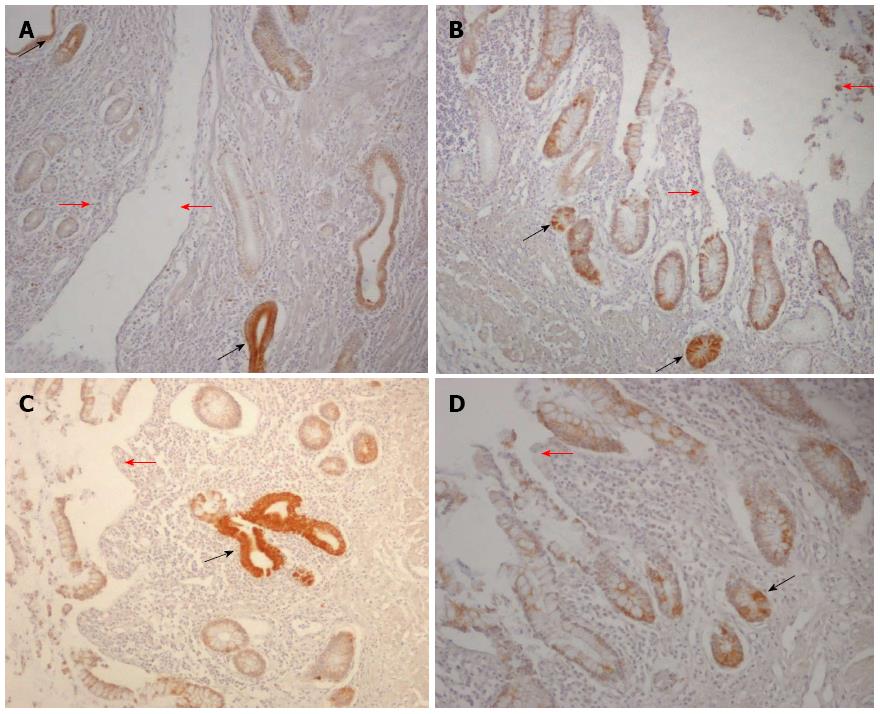Copyright
©2013 Baishideng Publishing Group Co.
World J Gastroenterol. Dec 7, 2013; 19(45): 8269-8281
Published online Dec 7, 2013. doi: 10.3748/wjg.v19.i45.8269
Published online Dec 7, 2013. doi: 10.3748/wjg.v19.i45.8269
Figure 4 Receptor for the advanced glycation end products staining in Crohn’s disease ulcerative areas.
A: Almost all cells of the epithelial compartment in close proximity to an ulceration (red arrows) proved receptor for the advanced glycation end products (RAGE)-positive (the brown cells), with the ulcer-associated cell lineage showing the highest immunoreactivity (black arrows); B and C: A detail of the epithelial cells in the crypt compartment at level of an ulceration (red arrows) showing moderate to strong RAGE-positive staining (black arrows); D: A detail of the epithelial cells of the surface compartment next to an ulceration (red arrow) showing strong RAGE immunoreactivity (black arrows) (RAGE immunoperoxidase-hematoxylin; original magnification, × 200).
- Citation: Ciccocioppo R, Vanoli A, Klersy C, Imbesi V, Boccaccio V, Manca R, Betti E, Cangemi GC, Strada E, Besio R, Rossi A, Falcone C, Ardizzone S, Fociani P, Danelli P, Corazza GR. Role of the advanced glycation end products receptor in Crohn’s disease inflammation. World J Gastroenterol 2013; 19(45): 8269-8281
- URL: https://www.wjgnet.com/1007-9327/full/v19/i45/8269.htm
- DOI: https://dx.doi.org/10.3748/wjg.v19.i45.8269









